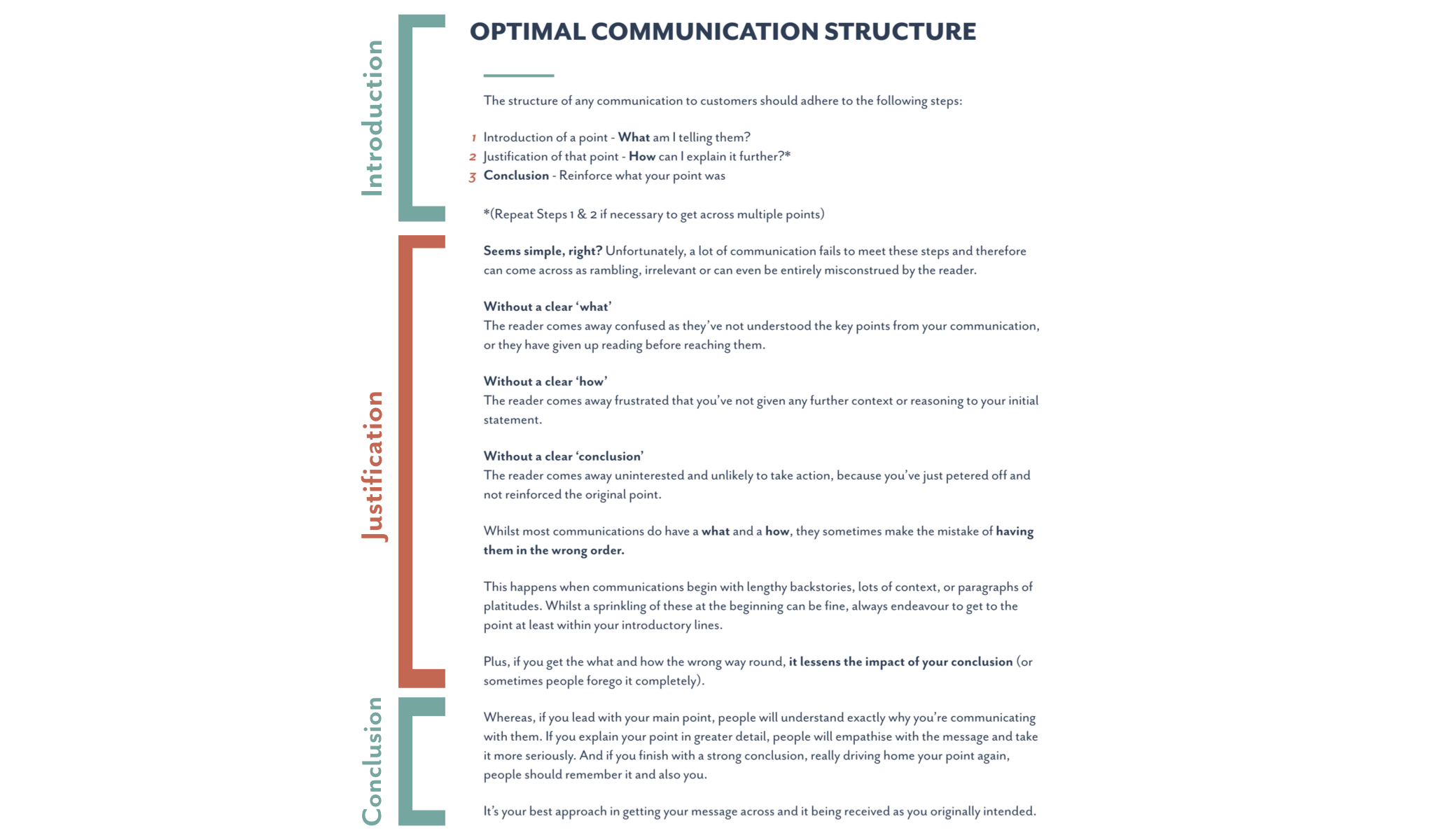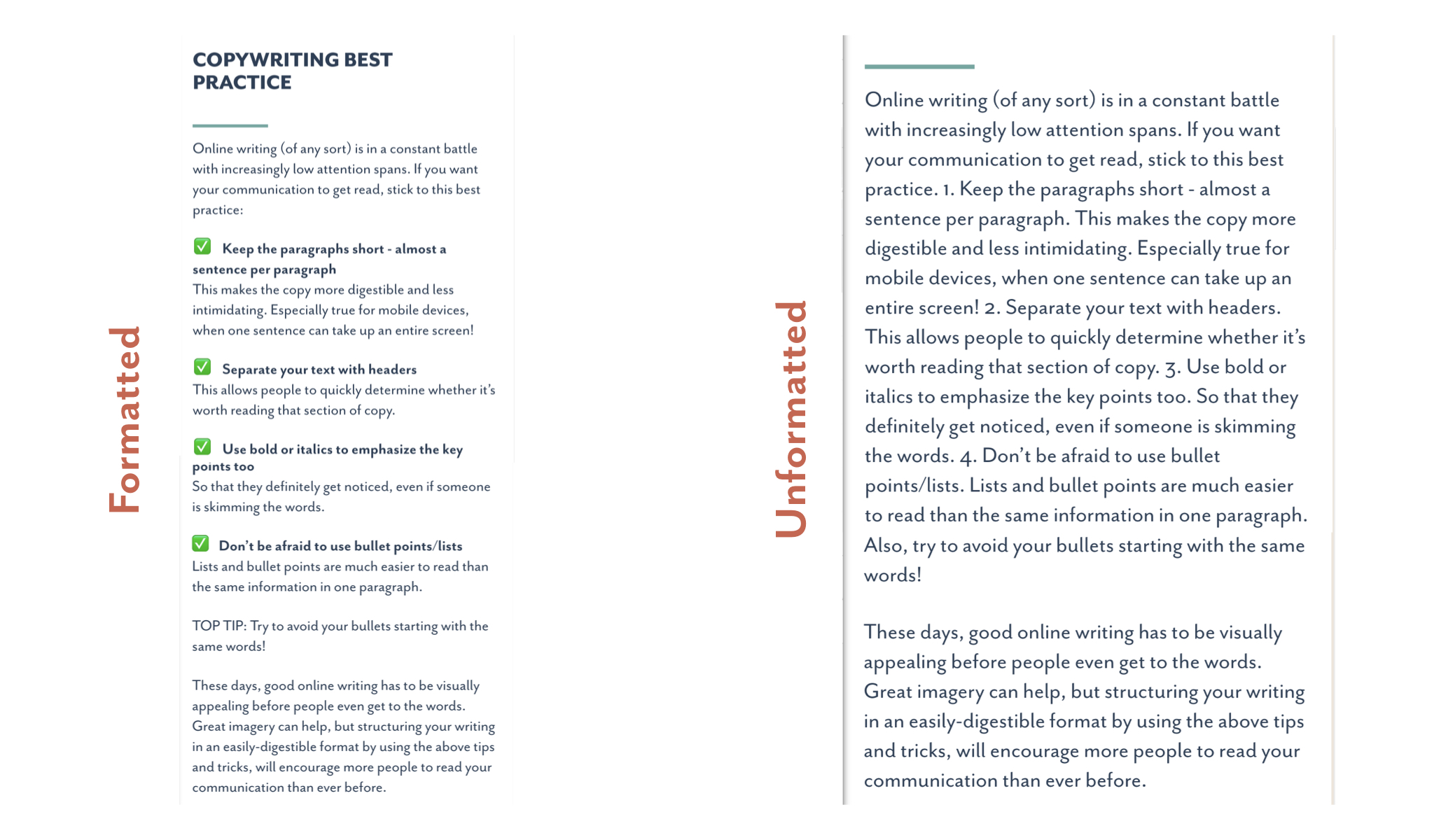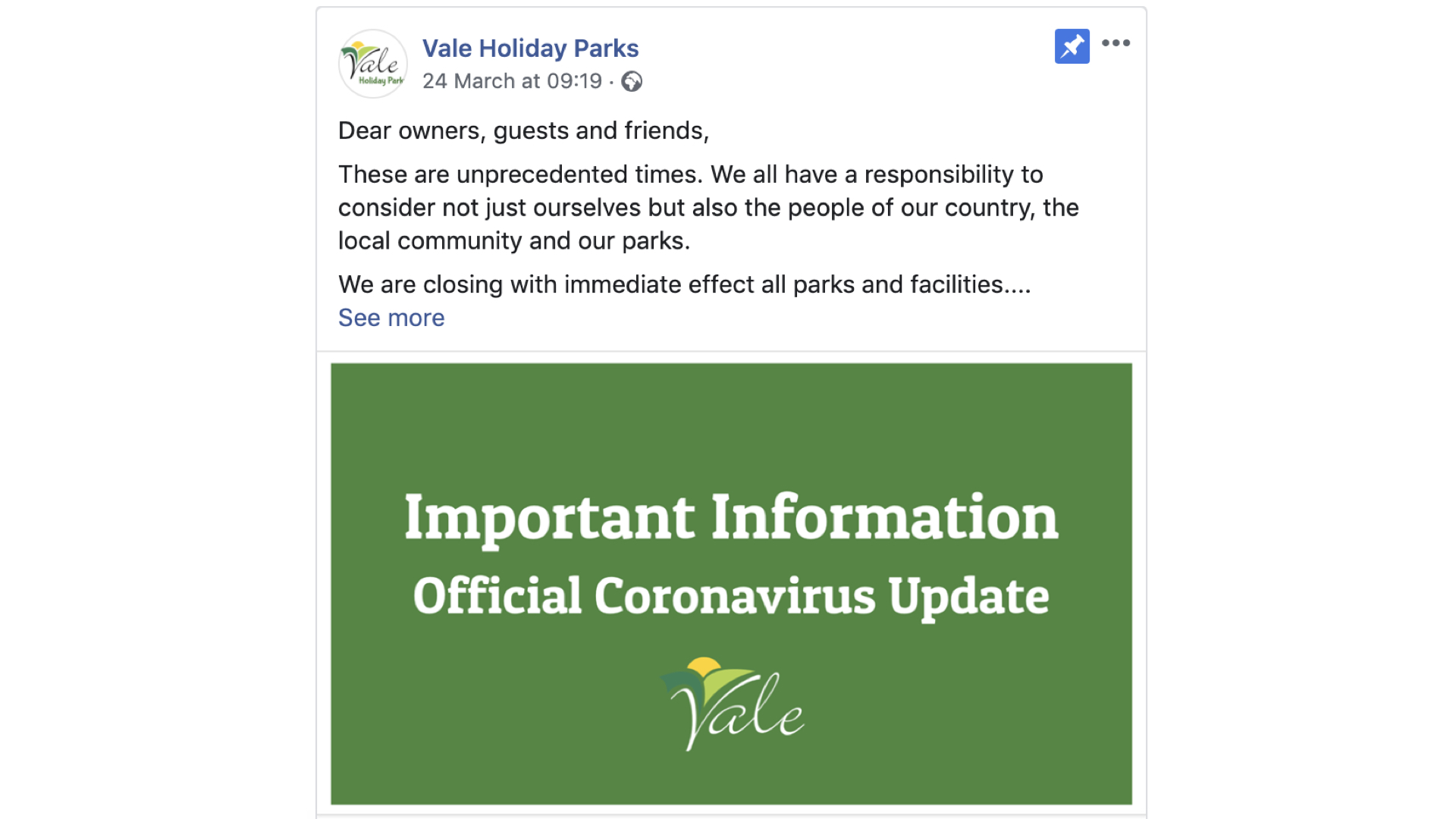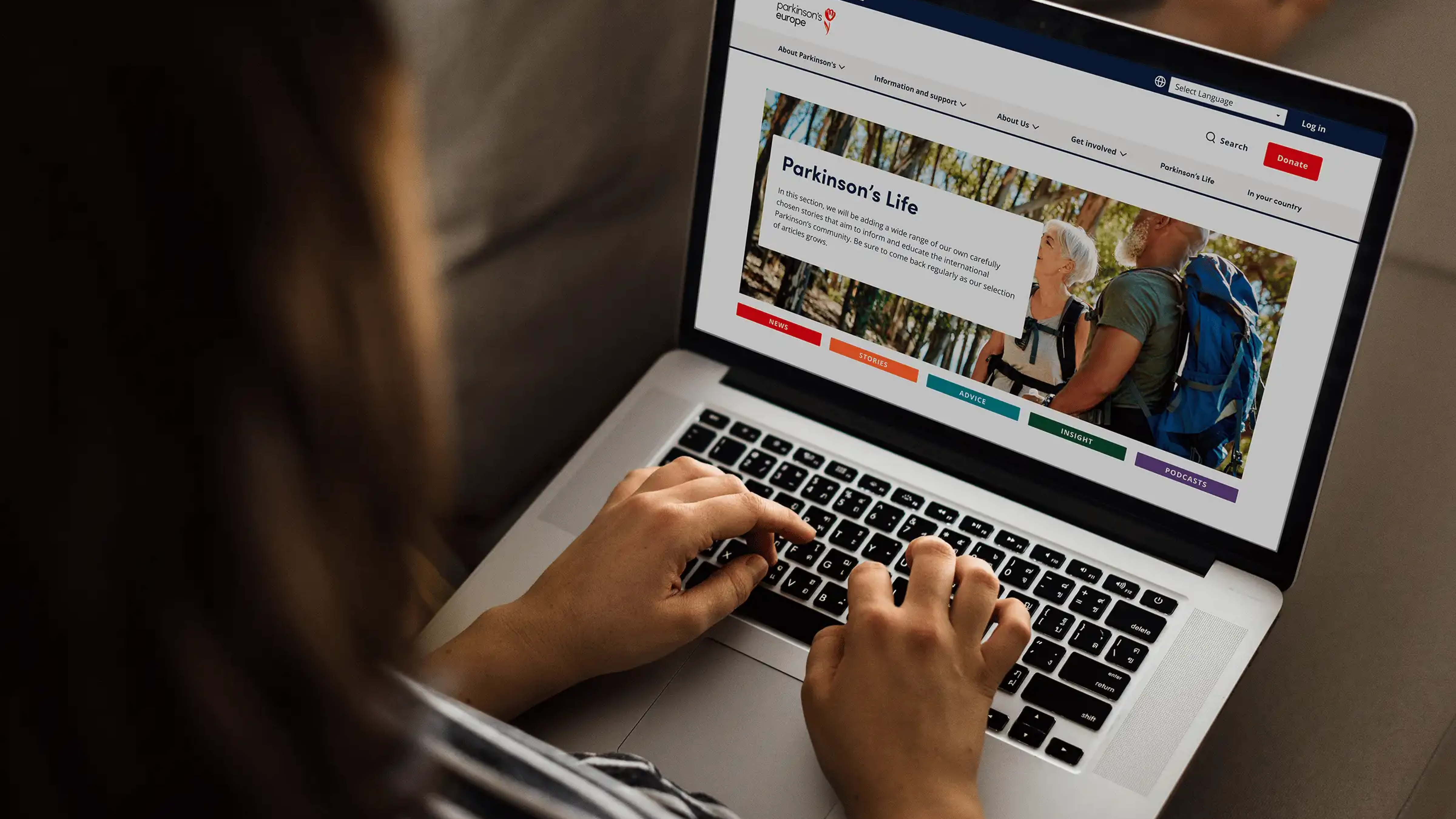Both in terms of being reactive - answering the 100s of phone calls and emails you’ve no doubt been receiving in the last week.
But equally important - by being proactive. By keeping customers in the loop with clear communication now, you can save time by answering their questions now (before they’ve had the chance to pick up the phone).
This guide will focus on the proactive side of things. Including:
- How to structure your communication to get your message across loud and clear
- Top tips on copywriting, specifically for web-based content
- The best ways to be communicating during Coronavirus - what you need to do and why
This communication guide is part of our Content Hub on how businesses can proceed with digital marketing during this period. Bliss is pooling our 10 years of industry experience to create these free and informative guides to help you with weekly updates.

Basics to Always Keep In Mind
We’re going to start this communication guide with some basic rules which may seem obvious, but can quickly slip when you’re rushing to get a message out. Don’t forget these rules if you want your words to have maximum effect.
Optimal Communication Structure
The structure of any communication to customers should adhere to the following steps:
- Introduction of a point - What am I telling them?
- Justification of that point - How can I explain it further?*
- Conclusion - Reinforce what your point was
*(Repeat Steps 1 & 2 if necessary to get across multiple points)
Seems simple, right? Unfortunately, a lot of communication fails to meet these steps and therefore can come across as rambling, irrelevant or can even be entirely misconstrued by the reader.
Without a clear ‘what’
The reader comes away confused as they’ve not understood the key points from your communication, or they have given up reading before reaching them.
Without a clear ‘how’
The reader comes away frustrated that you’ve not given any further context or reasoning to your initial statement.
Without a clear ‘conclusion’
The reader comes away uninterested and is unlikely to take action, because you’ve just petered off and not reinforced the original point.
Whilst most communications do have a what and a how, they sometimes make the mistake of having them in the wrong order.
This happens when communications begin with lengthy backstories, lots of context, or paragraphs of platitudes. Whilst a sprinkling of these at the beginning can be fine, always work towards getting to your point at least within your introductory lines.
Plus, if you get the what and how the wrong way round, it lessens the impact of your conclusion (or sometimes people forego it completely).
Whereas, if you lead with your main point, customers will understand exactly why you’re communicating with them. If you explain your point in greater detail, they will empathise with the message and take it more seriously. And if you finish with a strong conclusion, really driving home your point again, they should remember it and also you.
It’s your best approach in getting your message across and it being received as you originally intended.
Does it seem too theoretical? Here’s an example of a well-structured communication:

Even what you’ve just read has adhered to these rules, probably without you even noticing!
At the end of the day, don’t get too bogged down with worrying about structural perfection. The key to getting this to work is to make your point, back it up and then reemphasize it, and you’ll be good to go.
Copywriting Best Practice

Online writing (of any sort) is in a constant battle with increasingly low attention spans. If you want your communication to get read, stick to this best practice:
✅ Keep the paragraphs short - almost a sentence per paragraph
This makes the copy more digestible and less intimidating. Especially true for mobile devices, when one sentence can take up an entire screen!
✅ Separate your text with headers
This allows people to quickly determine whether it’s worth reading that section of copy.
✅ Use bold or italics to emphasize the key points too
So that they definitely get noticed, even if someone is skimming the words.
✅ Don’t be afraid to use bullet points/lists
Lists and bullet points are much easier to read than the same information in one paragraph.
TOP TIP: Try to avoid your bullets starting with the same words!
These days, good online writing has to be visually appealing before people even get to reading the words. Great imagery can help, but structuring your writing in an easily-digestible format by using the above tips and tricks will encourage more customers to read your communication than ever before.
EXAMPLE:

Here is another example from before, and how it looks mobile. The left is in its current format, the right is written for zero formatting.
Even though the example on the left is longer, it is a lot more visually appealing and it is clear to the reader what type of content they’re about to digest. Words jump out before you’ve even started reading the whole paragraph.
Whereas, the right could be about anything, as the chances are people won't even read the whole thing…
Clear Communication During Coronavirus
Frequency of Communication

During this period of uncertainty, more communication is definitely better than less. People will be looking to you for answers and guidance. So the more you can give - the more you will appear abreast of the situation and confident.
Keep all communications well updated with the same message, mirroring the latest government advice and news.
Frequency Going Forward
Though things have been changing quickly, hopefully, they have slowed down a little since the lockdown was introduced and you can now be more proactive with the communication you would like to release.
The government will be continually assessing whether the lockdown needs to continue going forwards. Make sure you are ready for when an end date is in sight.
Tone of Communication

Currently, the best tone of voice to use when addressing Coronavirus is much more formal and less lighthearted than usually may be appropriate for your business.
You should write communications similarly to how you deal with complaints - be polite, be factual and be clear.
The mood of this period is sombre and it is important to respect that in communications. Trying to force happiness* will seem insincere, tone-deaf and at worse, offensive.
That being said, don’t forget to be human. Send support and sign off from the higher-ups in your business, wishing your customers well.
Also, make sure you don't paint yourself as the cold 'bad guys'. For example, if you work for a holiday park, this is a time when many people probably wish they could be escaping to your park (either on holiday or to their holiday homes), don’t let it appear that you're the ones not letting them on-site. Remind them that by following government procedures you have their, and the country’s, best interests at heart by shutting your park.
*You can aim for a little cheeriness on occasion. Just be very careful with how it is framed. Make sure it is very clear that your aim is to try to raise the mood, not for self-promotion purposes.
Tone of Voice Going Forward
In the coming weeks, we predict that these current high levels of formal communications may drop a little. As people adapt to the lockdown, they will be less on edge and looking for professional reassurance.
Instead, people may be growing bored of being at home and restless. This is when you could create some content to inspire them but only for when normal life returns.
We cannot stress enough - don’t try to sell anything directly opposing government advice for during this period. It could damage your business and reputation irreparably.
Structure of Communication
You’ve probably received emails in the past week from hundreds of companies explaining their stance on Coronavirus. They’re important and useful, but there’s a lot of them.
Right now, the world is not interested in long explanatory letters. Customers want succinct information which will answer their questions.
We’ve seen a number of parks implement a Coronavirus FAQ section to their website. This is the perfect way to get across large portions of information. It allows the customers to easily find the information without having to call you.
A great example of a well-updated FAQ
Keep it short, informative and remember the above structural rules to really get your message across.
Methods of Communication

We’ve split this section into the three main methods you should be using right now to keep your current and potential customers up-to-date.
Unsure of what to say? We've made a checklist of communications you should release ASAP
Website
Have one page on your website with all of the information, updates and latest news surrounding Coronavirus. As already suggested, this could be a FAQ, or a list of dated updates, or both (as seen here).
Make sure it is front and centre on the homepage of your website, and remains visible throughout, so people can always find the latest information.
Social Media
Create a pinned social media post for every social media platform you are active on. If you want to create imagery for visual-based social media, keep it branded but simple.
It’s easier to stick to shorter messages with links back to your website’s Coronavirus page for the full information. Also, make sure that key points are above the ‘see more’ buttons, so someone doesn’t even have to click to know your news.
 EXAMPLE: Vale Holiday Parks Facebook post about Coronavirus
EXAMPLE: Vale Holiday Parks Facebook post about Coronavirus
Social media is also a very ‘human’ experience. As ever, don’t forget to reply to any comments. Plus, if you’re writing a big statement like the one above, consider addressing it to your audience to seem genuine and more like a person than a company.
It’s important to find the balance between personable but not lighthearted, official but not cold.

Emails are your best communication method to inform your entire network that you have an update. But remember - the aim of the email should be to send readers to your website to find all the details!
As previously mentioned, people are receiving a lot of emails right now, so you can’t rely on yours being read. Therefore, make sure the content is always sending them back to your website.
That way, if you send 3 emails, it doesn’t matter if the reader hasn’t opened the first and second, because they’ll still be able to access the full information from the third.
Email Copy Tips
Busy inboxes also lead to lower attention spans from readers, so make sure your copy is clear and concise so that your message quickly permeates.
Similarly to social media, make your emails personal to your customers to show you care about them. Emails have the advantage of including ‘Merge Fields’ which automatically put in the addressee’s name. Use this at the top of your message and even in subject lines if you feel it’s appropriate.
Also, don’t forget to sign off from someone high up in the business - to show that this is a priority to even the Park Owner, CEO, MD or the whole family (if applicable) - and not just a normal marketing communication.
Finally, stick to informative subject lines. Now is not the time for clickbaity “You won’t believe what’s inside...” messages:
- They’re more likely to be classed as spam and not make it into inboxes
- The tone is completely wrong and won’t be appreciated by readers
Coronavirus Communication Errors to Avoid
On top of everything above we have suggested you do, make sure you don’t fall into any of these traps. Do not:
❌ Promote people to do things now which the government is advising against
❌ Pretend that Coronavirus isn’t happening
❌ Have different updates on different platforms - keep the message consistent.
❌ Forget to reply to any messages you receive
Key Steps

Clear, concise and consistent communication during the Coronavirus era is paramount for the safety and wellbeing of your customers and staff.
Following the above steps and guides will boost the engagement and effectiveness of what you are trying to say.
Leaving customers informed and satisfied will help to maintain a good impression, and this may ensure that you are their first choice when this all ends.
Ultimately though, words coming from you, to the customer base you know and appreciate, will always resonate the most. Just make sure you keep everyone updated on the situation, and make sure you stay safe yourself.
Check out our full Content Hub for advice, best practice and ideas on how businesses can proceed with digital marketing during the Coronavirus period.
Articles and Blogs
Our blog gives you more of an insight into who Bliss are and what we’re up to. Check out our articles below.
View all articles

